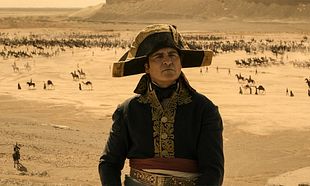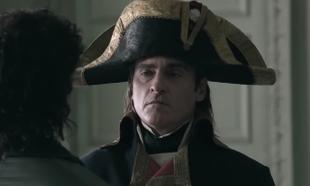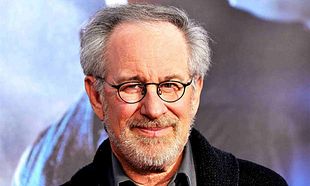
Napoleon
1927 DramaThe chef d'ouevre of legendary French filmmaker Abel Gance, the 235-minute Napoleon was supposed to have been the first installment in a multipart film study of the French military hero. Each of the film's set pieces is treated like a movie in itself: the opening pillow fights and snowball battles, staged while Napoleon is still a schoolboy (played by Russian youth Vladimir Roudenko), are choreographed on a scale worthy of D.W. Griffith. The plot proper begins with Napoleon's adult years. From home island of Corsica, Lt. Napoleon (played as an adult by Albert Dieudonné, and old friend of Gance's) decides to side with the Republic during the French Revolution. He quickly proves his mettle in a preliminary skirmish with the British. Offered the office of commander of Paris, Napoleon declines: he does not subscribe to Reign of Terror, nor does he believe in doing battle against Frenchmen. He is thrown in prison, where he meets his wife-to-be Josephine; thanks to a series of governmental upheavals, both are set free. For the next few years, France's bureaucratic bean-counters and pencil-pushers constantly thwart Napoleon's dreams of glory. The film's climax is Napoleon's rallying of the dispirited French troops and his subsequent advance into Italy.Beyond its patriotic content, Napoléon was largely designed as a showcase for the revolutionary Polyvision process. Simply put, Polyvision utilized multiple images for dramatic effect. Sometimes this was accomplished in a fragmentary manner similar to the multiscreen techniques utilized in such 1960s films as The Thomas Crown Affair and The Boston Strangler. Polyvision could also manifest itself into a Cinerama-like triptych: three screens, side by side, sometimes offering a panorama, sometimes displaying three separate but thematically linked images. Napoleon's spectacular triptych finale was the crowning touch to the remarkable camera pyrotechnics seen throughout the film; Gance hated static scenes, so he mounted his camera on pendulums, horses, gyroscopes, et al., masterfully placing the spectator in the thick of the action. The film also boasts some of the silent era's best color tinting, with special emphasis on the red, white, and blue of the French flag. Except for limited European showings, Napoleon has not been displayed in its original form since its 1927 Paris premiere. At least 19 different versions of the film exist, some horribly mutilated (cut from 17 reels to eight) and scrambled, others haphazardly reedited by Gance himself. Filmmaker/historian Kevin Brownlow's 1968 book The Parade's Gone By renewed public interest in Gance's lost masterpiece, sparking a 15-year campaign to restore Napoleon, spearheaded by Brownlow and American director Francis Ford Coppola. The resultant restoration job is not perfect -- the triptych scenes had to be reduced to postage-stamp size because no existing screen can accommodate them -- but this Napoleon is probably the closest we'll get ever get to the original. The music for the restored version was composed by Francis Ford Coppola's father Carmine Coppola.~ Hal Erickson, All Movie Guide
Streaming Links
Sorry, we don’t have any streaming links for Napoleon right now. Please check again later.






